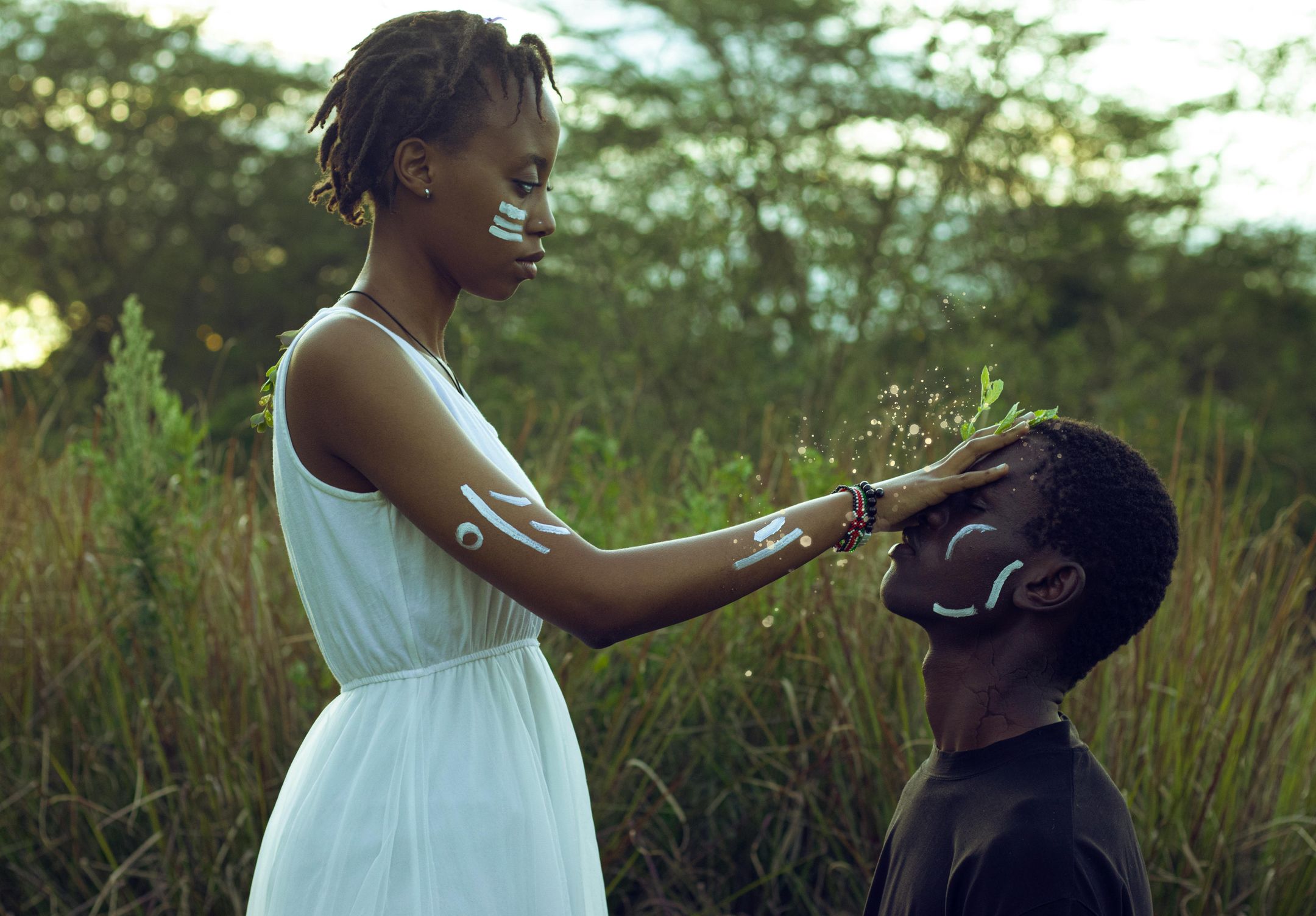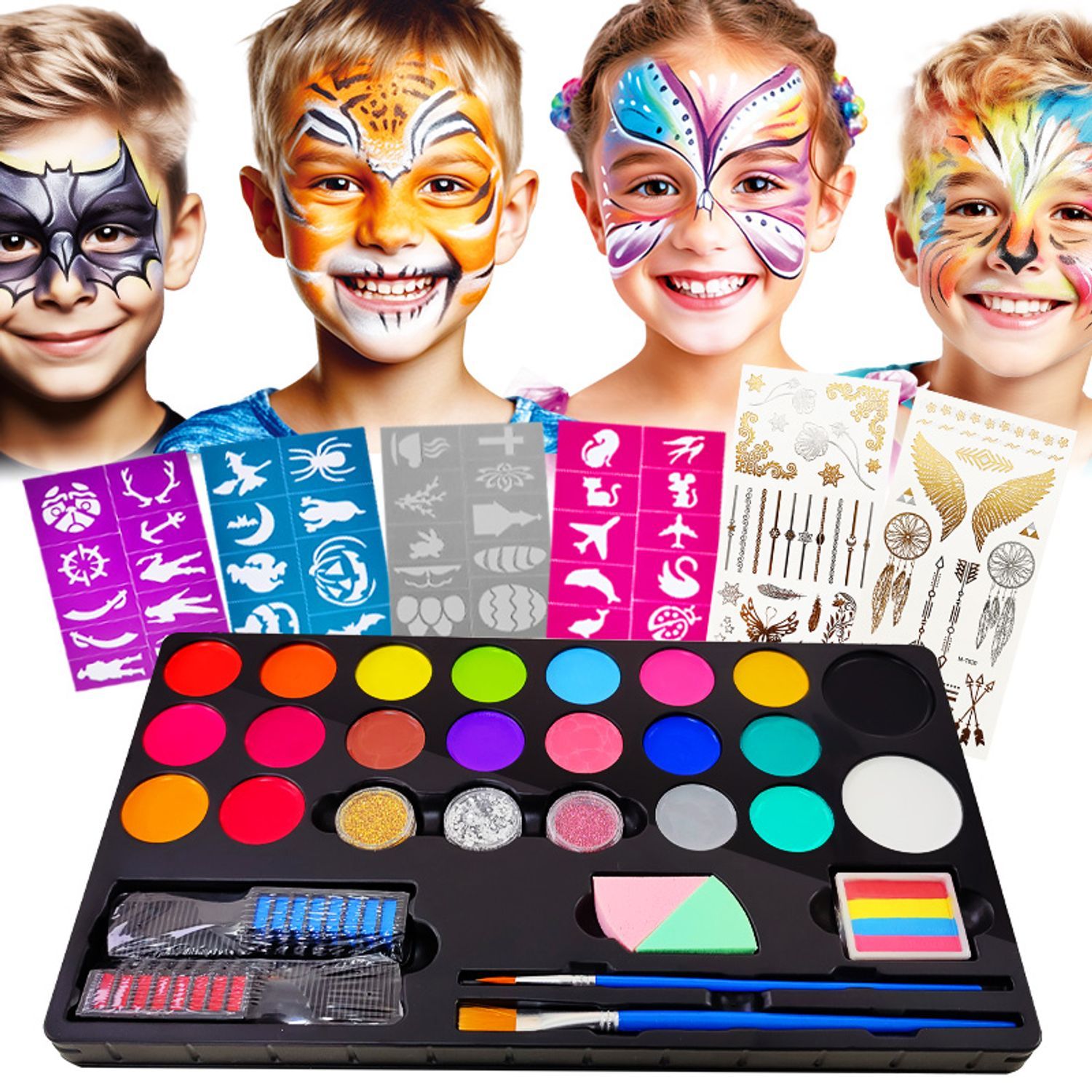betty@kaihong888.com

Get A Quote
Where Did Face Painting Originate? Exploring the History and Lore of Face Painting
Face painting has captivated humanity for centuries, with its roots embedded deeply in cultural traditions, rituals, and festivities. This vibrant art form has evolved over time, reflecting the values, beliefs, and artistic expressions of various societies. In this article, we will explore the history of face paint and delve into the lore of face painting, uncovering the origins and significance of this enduring practice.
The Ancient Beginnings of Face Painting
Early Evidence of Face Painting
The history of face paint can be traced back to prehistoric times, with archaeological findings suggesting that ancient humans used natural pigments to adorn their faces. These early forms of face painting were not merely decorative but served as important tools for survival and social cohesion. Early humans used face paint for camouflage during hunting, as well as for protection against the elements and insects. The lore of face painting from these early times reveals a deep connection to nature and the environment.
Face Painting in Ancient Cultures
As societies evolved, so did the practice of face painting. In ancient Egypt, for example, face painting was an integral part of religious ceremonies and rituals. The Egyptians believed that face paint had magical properties that could protect them from evil spirits and enhance their connection with the gods. The use of kohl to outline the eyes is one of the most iconic examples of Egyptian face painting, which also had practical purposes like protecting the eyes from the harsh sun.
The Indigenous Traditions
The history of face paint is also rich in the traditions of indigenous cultures around the world. Native American tribes, for instance, used face paint for various purposes, including spiritual rituals, war paint, and social ceremonies. Each tribe had its own unique symbols and colors, with specific meanings attached to them. The lore of face painting in these cultures often tells stories of bravery, spiritual journeys, and the connection between humans and the divine.
Face Painting in Historical Context
The Influence of Theatrical Performances
In ancient Greece and Rome, face painting became a crucial element of theatrical performances. Actors used face paint to portray different characters and convey emotions more vividly to the audience. This use of face painting in theater highlights its role in storytelling and entertainment, a tradition that continues in various forms today.
The Medieval and Renaissance Eras
During the Medieval and Renaissance periods, face painting saw a resurgence in popularity, particularly in Europe. The elaborate use of face paint during festivals, masquerades, and carnivals became a significant cultural phenomenon. The history of face paint from this era reflects a blend of artistry and social commentary, with face paint often used to mock or satirize societal norms.
The Modern Evolution of Face Painting
Face Painting in Contemporary Celebrations
In contemporary times, face painting has become a staple of celebrations worldwide. From children's birthday parties to large-scale festivals like Mardi Gras and Halloween, face painting adds a touch of magic and creativity to these events. The lore of face painting today often centers around themes of fun, fantasy, and self-expression.
The Role of Face Painting in Popular Culture
The influence of face painting extends beyond traditional celebrations into popular culture. Iconic figures like David Bowie and Kiss have used face paint as a key element of their stage personas, shaping their identities and leaving a lasting impact on their fans. The history of face paint in popular culture underscores its power to transform and captivate audiences.
The Cultural Significance of Face Painting
Face Painting as a Form of Identity
Throughout history, face painting has been used as a powerful form of identity and self-expression. In many cultures, the designs and colors chosen for face painting can signify an individual's status, role, or affiliation within a group. This aspect of the lore of face painting emphasizes the importance of visual symbols in communicating personal and communal identity.
The Spiritual and Ritualistic Aspects
The spiritual and ritualistic significance of face painting cannot be overstated. In many societies, face painting is an integral part of religious and ceremonial practices. The history of face paint in these contexts reveals a deep connection to the spiritual realm, where painted faces become a medium for invoking deities, spirits, and ancestors.
Face Painting as a Symbol of Resistance
In more recent history, face painting has also been used as a symbol of resistance and protest. During social and political movements, individuals and groups have employed face paint to make powerful statements and convey their messages visually. The lore of face painting in this context highlights its role as a tool for activism and social change.
The Techniques and Materials of Face Painting
Traditional Pigments and Methods
The materials and techniques used in face painting have evolved over time, reflecting advancements in technology and artistry. Traditionally, natural pigments derived from plants, minerals, and insects were used to create face paints. The history of face paint includes the use of ochre, charcoal, and henna, among others, each offering unique colors and properties.
Modern Face Painting Techniques
Modern face painting techniques have become more sophisticated, with a wide range of products available, from professional-grade face paints to easy-to-use kits for beginners. The lore of face painting now includes tutorials, workshops, and competitions, where artists can showcase their skills and creativity. The advent of safe, non-toxic face paints has made this art form accessible to people of all ages.
Conclusion: The Everlasting Appeal of Face Painting
The history of face paint and the lore of face painting reveal a fascinating journey through time and cultures. From ancient rituals to contemporary celebrations, face painting has remained a vibrant and dynamic form of artistic expression. Its ability to convey identity, tell stories, and evoke emotions continues to captivate people around the world. As we celebrate this enduring art form, we honor the creativity and cultural significance that have kept face painting alive for millennia.
By understanding where face painting originated and appreciating its rich history, we can deepen our connection to this colorful tradition and ensure its legacy for future generations. Whether used for spiritual purposes, theatrical performances, or simply for fun, face painting remains a testament to the universal human desire to adorn, transform, and celebrate the human face.
If you're inspired by the rich history of face painting and looking to explore this vibrant art form, KHY offers a wide range of high-quality face paints and accessories. Our products are designed to help you unleash your creativity and make every occasion special. From safe and non-toxic face paints for kids' parties to professional-grade products for artists, KHY has everything you need to bring your face painting ideas to life. Visit our website today and discover the perfect face paint for your next event!

